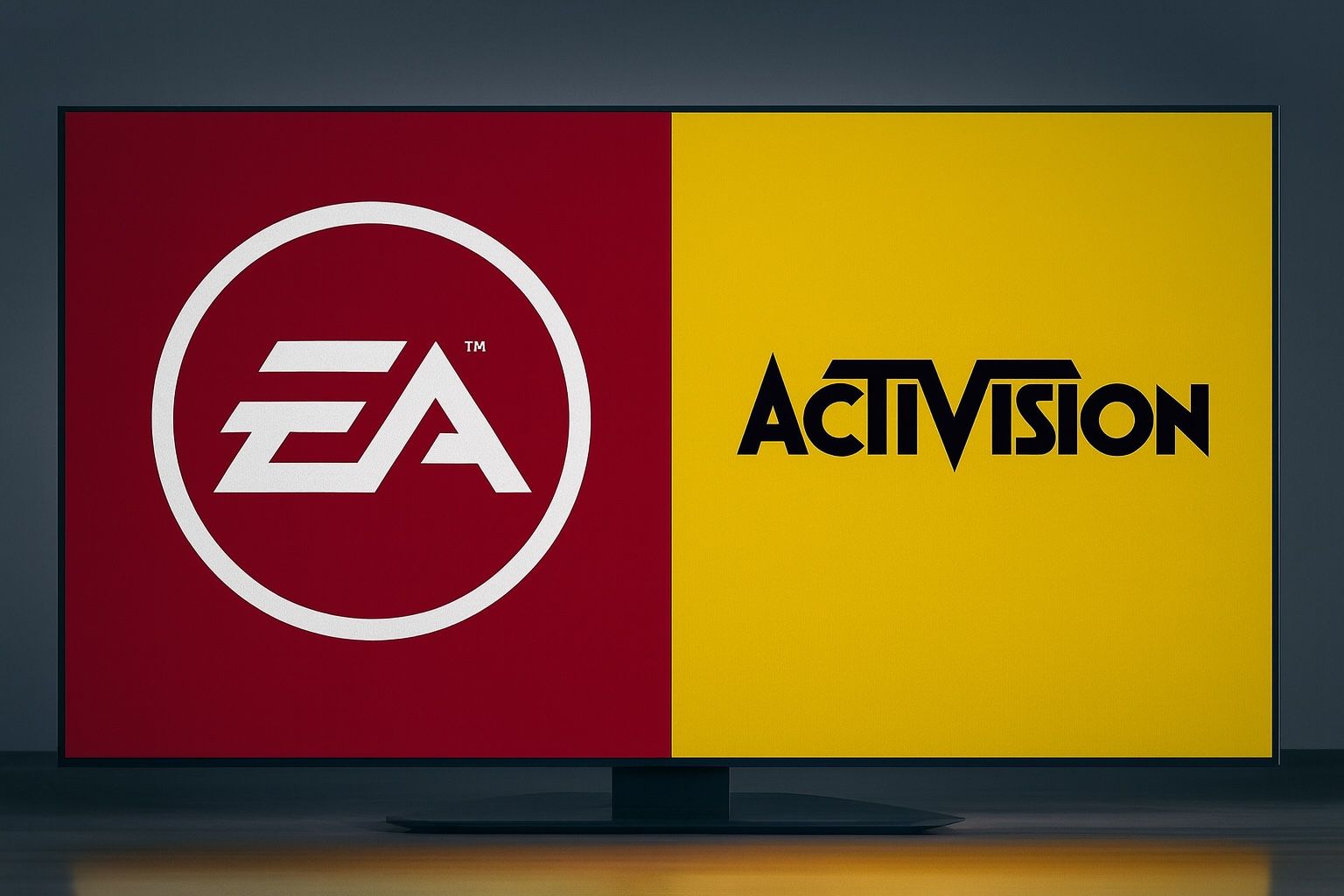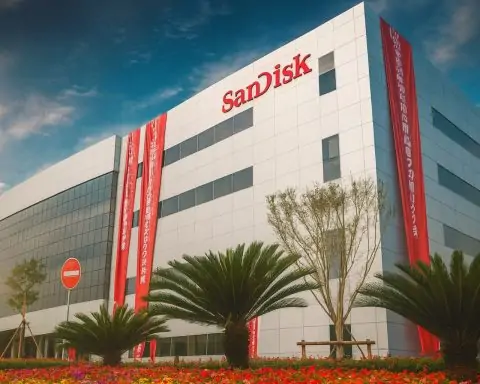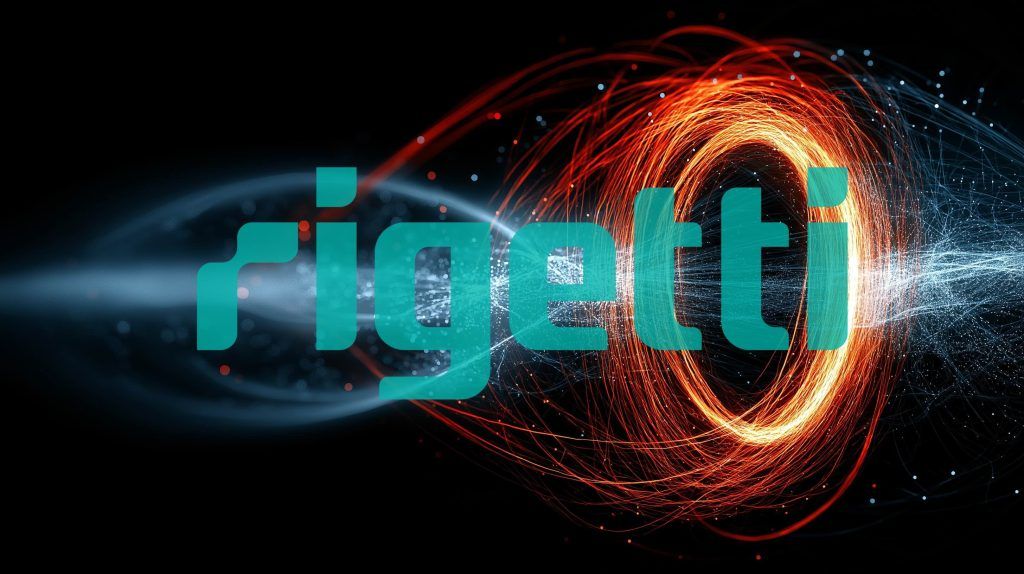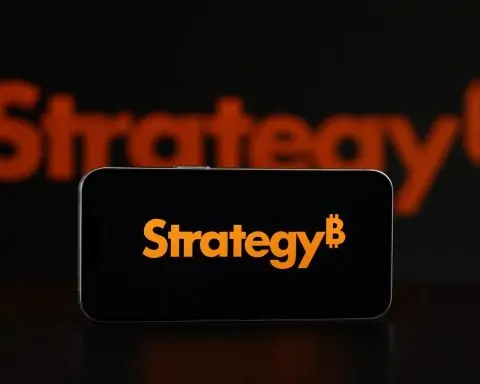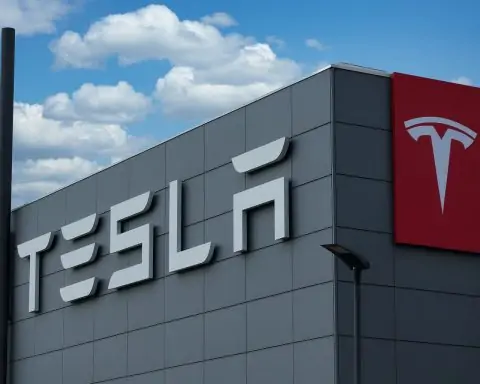- ATVI’s Final Payout: Activision Blizzard’s stock hit ~$95 in late 2023 as Microsoft’s takeover closed – a ~45% premium over pre-deal prices [1]. The deal ended ATVI’s independent run, locking in hefty gains (shares jumped ~40% in 2023 amid deal optimism) [2].
- EA’s Stock Hits High Score: Electronic Arts shares have climbed about 19% year-to-date 2025, recently reaching all-time highs near $179 in August. Strong earnings (Q2 FY2025 revenue +32% YoY) and popular game launches drove this outperformance.
- Major Moves & Shakeups:Activision Blizzard was acquired by Microsoft in October 2023, the largest deal in gaming history at $68.7B. Longtime CEO Bobby Kotick exited post-merger at 2023’s end [3]. EA restructured in 2023, splitting into EA Entertainment (Apex Legends, Battlefield, etc.) and EA Sports, and trimmed ~6% of staff amid cost cuts. EA also launched its new EA Sports FC franchise in 2023 after ending its 30-year FIFA partnership.
- Financial Face-off: Activision (pre-acquisition) generated ~$7.5 B in 2022 revenue with robust margins (~25% operating margin) thanks to mega-franchises like Call of Duty and Candy Crush. EA’s annual revenues are similar (~$7.4 B in FY2024) and growing mid-single digits, but its recent margins have been under pressure (Q2 op margin 16%, down from 28% a year prior) due to higher costs. EA’s balance sheet is healthy (debt ~$1.9 B, a modest 31% debt-to-equity) and it continues to invest in new titles.
- Valuation & Returns: EA trades around 36–43× trailing earnings, or ~20× forward earnings, with a 0.4–0.5% dividend yield. Activision was valued ~30–35× earnings in the buyout, equivalent to ~9× sales – a rich price reflecting its strong IP portfolio. EA returns cash via a small dividend (annual $0.76/share) and regular buybacks, whereas Activision’s shareholders received a one-time windfall via Microsoft’s $95/share cash deal.
- Expert Outlook: Wall Street is cautiously optimistic on EA – about 20 analysts rate it a “Buy,” though the average 12-month price target of ~$168 is slightly below the current price, implying the stock is fairly valued after its recent run. Some bulls see upside to $200+ if upcoming games succeed. Activision’s sale removed it from analysts’ coverage, but its premium valuation signaled confidence in the long-term potential of its franchises. Notably, some analysts have flagged EA as a possible beneficiary of industry consolidation, or even a takeover target, given its coveted sports franchises and ~$38B market cap – though EA’s CEO downplayed any material impact from the Microsoft-Activision deal.
- Competitive Landscape: The gaming industry in 2025 is dominated by a few heavy hitters. With Activision Blizzard now under Microsoft’s Xbox umbrella, the combined entity is the world’s #3 gaming company by revenue (behind Tencent and Sony) [4]. Electronic Arts, as one of the largest independent publishers, faces competition from other majors like Take-Two Interactive (Rockstar, 2K) and Nintendo, but maintains leadership in sports games and a broad portfolio. Industry trends favor the incumbents: gaming has steadily expanded its share of entertainment, and pandemic-era engagement has remained high. Both EA and Activision have capitalized on the shift to digital distribution and recurring in-game revenue (like FIFA Ultimate Team and Call of Duty microtransactions), which provide more stable, “annuity-like” cash flows.
- Franchise Strengths & Pipeline: Activision Blizzard’s library is now Microsoft’s crown jewel – Call of Duty delivers annual blockbuster sales, Candy Crush generates massive mobile revenues, and Blizzard’s franchises (Warcraft, Diablo, Overwatch) command dedicated fanbases. 2023’s Diablo IV launch, for example, drove Blizzard’s segment revenue up 160% year-on-year in Q2, showcasing the enduring hunger for its IP. Looking ahead, as part of Microsoft, Activision can leverage Xbox’s distribution (Game Pass) to widen reach, though Microsoft has stated new releases like Call of Duty: Modern Warfare III won’t hit Game Pass until at least 2024. For EA, sports titles remain a dependable engine – Madden NFL and the newly rebranded EA Sports FC (formerly FIFA) release annually to a built-in global audience. Early reception to EA Sports FC has been solid, alleviating fears about losing the FIFA name. EA is also nurturing an innovation pipeline beyond sports: upcoming big-budget games include Dragon Age: Dreadwolf and a new Mass Effect, as well as partner projects like a new Star Wars Jedi installment and several Marvel games in development. EA’s track record of turning original IPs into hits (The Sims, Apex Legends) gives investors hope for the next breakout franchise.
- Long-Term Growth Prospects: Both companies are positioning to ride secular tailwinds in gaming. Activision (within Microsoft) benefits from deeper pockets and integration across PC, console, and cloud platforms – the company aims to bring more of its titles to cloud gaming and subscription services, tapping new players. Microsoft’s ownership could also unlock synergies (e.g. better AI/data capabilities in game development [5] and expansion into emerging markets via Xbox). EA’s growth strategy focuses on its live services and expanding its IP reach: it’s investing in esports, mobile adaptations, and user-created content (e.g. the upcoming The Sims 5 is expected to be free-to-play with monetized content). Analysts forecast EA’s revenues to grow in the high single digits annually in the near term, with a more significant jump in earnings (~96% FY2025 EPS growth expected) as cost efficiencies from the 2023 restructuring kick in.
- Risks and Headwinds: Despite their strengths, both firms face challenges. Activision Blizzard must ensure a smooth integration into Microsoft – retaining key talent and autonomy at studios like Blizzard will be crucial to sustain creativity. The company has also grappled with reputational issues from past workplace misconduct scandals [6] [7]; Microsoft has pledged to uphold cultural reforms post-merger. There’s also franchise concentration risk: Call of Duty accounts for a large chunk of Activision’s revenue – any slip in quality or popularity (or a competitor’s hit game drawing players away) could hurt results. Electronic Arts faces its own hurdles: it relies heavily on sports licensing deals (e.g. with FIFA’s replacement governing bodies, NFL, NHL, etc.), so maintaining those partnerships is critical and increasingly expensive. The Ultimate Team mode, a cash cow, has drawn regulatory scrutiny in some countries over “loot box” mechanics. EA’s non-sports titles can be hit-or-miss – e.g. the last Battlefield underperformed, raising pressure on the next release to win back gamers. Both companies also contend with the broader industry headwinds: intensifying competition from free-to-play games and new entrants, the ever-present threat of tech disruption (like cloud gaming possibly eroding console sales or AI tools lowering barriers for indie competitors), and macroeconomic factors (a downturn could soften consumer spending on games or in-game content).
- Shareholder Returns: Investors in EA get a modest dividend (~0.45% yield), and the company has been opportunistically buying back shares (returning over $1.3 B via repurchases in the last year, per filings). While the yield is low, these moves signal confidence in steady cash flows and provide some return of capital beyond stock appreciation. Activision Blizzard paid a small dividend as well (historically ~0.6–0.7% yield), even boosting it in 2023 before the buyout, but ultimately the big payoff to shareholders came in the form of Microsoft’s acquisition premium. For investors, Activision’s case proved that a strong portfolio of IP can attract takeover interest at a lucrative price. EA’s management, for its part, insists the company can thrive solo – CEO Andrew Wilson even remarked that whether or not the Microsoft-Activision merger happened was “not really material” to EA’s outlook. In fact, EA prides itself on being Microsoft’s “biggest [publishing] partner” on Xbox, suggesting it can enjoy the industry’s upside while staying independent (and perhaps even use its healthy balance sheet to acquire smaller studios to fuel growth).
Bottom Line: Play or Pass?
From an investment standpoint, Activision Blizzard (ATVI) delivered a win for its shareholders through Microsoft’s buyout – crystallizing the value of its powerhouse franchises in one stroke. Going forward, exposure to Activision’s performance is essentially through Microsoft (MSFT) stock, as the gaming division’s results fold into that tech titan’s broader business. Electronic Arts (EA), meanwhile, offers a pure-play opportunity in interactive entertainment with a diverse portfolio and reliable cash generation. EA’s 2025 momentum – record-high stock prices, strong game launches, and ongoing efficiencies – reflects its solid positioning. However, its valuation now prices in a lot of optimism, and the company must continue executing (annual sports titles must retain gamers, and new games need to impress) to justify further upside.
For public investors, both gaming giants illustrate different angles of the industry: Activision Blizzard showed how irreplaceable content can command a premium from deep-pocketed buyers [8], whereas EA represents a steady growth story balancing blockbuster IP and live-service revenues. Future gains in EA may be more incremental absent a takeover, but it remains a leading player in a growing sector. As always, prospective investors should weigh their risk appetite – e.g. concentration in a few franchises (higher for Activision) vs. a more diversified lineup (EA), and the uncertain impact of industry shifts like cloud gaming or regulatory changes. In summary, EA offers continuing participation in the video game boom with dividends and growth potential, while Activision’s legacy now lives on within Microsoft’s empire – a testament to the significant value that top-tier game IP can unlock for shareholders, whether through market performance or strategic exits.
Sources: Activision Blizzard/Microsoft deal details [9]; EA and ATVI stock performance data; EA Q2 2025 earnings beat; EA restructure and layoffs; Analyst consensus on EA; CEO commentary on consolidation; Dividend yields; Industry trends.
References
1. www.financierworldwide.com, 2. gameworldobserver.com, 3. en.wikipedia.org, 4. www.theverge.com, 5. en.wikipedia.org, 6. www.financierworldwide.com, 7. www.financierworldwide.com, 8. www.financierworldwide.com, 9. www.financierworldwide.com
